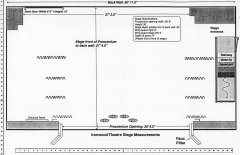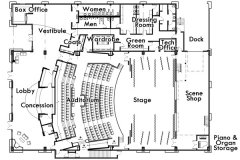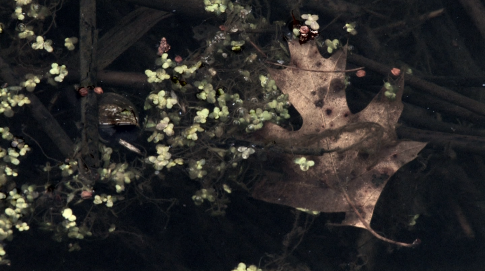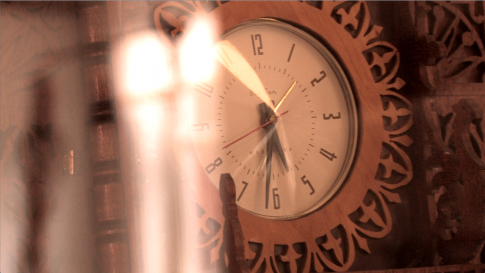Performance
I saw the film Carnage last night. It is worth mentioning in this blog not because it was good (though I wouldn't say it was bad) or because I liked it, but because it told a story in a very interesting way.
The story: Carnage is about a fight between two boys. You never see these two individuals beyond the intro and outro of the movie, though, instead they are developed as characters through their parents. What is most interesting about their development is the shifts of parental perspective; at times they are defended, cherished, and admired, but they are also at times revealed to be terrors, monsters, soul-sucking parasites. What the real story ends up being about is the faces we put on as adults that we believe so dearly are our true, civilized selves, but which, given enough time and alcohol, fall away to reveal the childish needs and desires we still carry.
The telling: This is a play. Everything about it is a play, from the location (one room) to the plot (character-centric) to the delivery (projected voices). The dialogue is heavy, with each line hammering home an element of the speaker's personality. Penelope (Jodie Foster), constantly dripping with morality, judgement, and desperation. Michael (John C. Riley), the accommodator. The props are overly meaningful and each character is drawn to them like a moth to a flame. Tulips find themselves embodying roles of politeness and convention ("what lovely tulips"), power and destruction (dropping a cell phone into the vase), and eventually carnage (being flung around the room). Books serve to bond the two female characters at first, only to tear them apart in the end. Cobbler finds itself being ingested and spewed back out, both physically (thrown up onto aforementioned books) and metaphorically ("delicious" while being eaten, but "horrible" in the secrecy of a private conversation).
The story is as much a traversal through interactions with physical objects as it is a narrative about two boys.



Beginning.
I struggle with each project. That may seem like an obvious statement, but I can't emphasize enough the crippling self-doubt, depression, anxiety, and paranioa that accompany each and every moment of attempted creation.
My assignment is simply to create a performance. Simple. Easy. Paralyzing.
What I face now is the objective of sculpting not simply a video, but a video system. It needs to answer questions, so many of which I don't even know to ask yet. A few questions, however, are immediately accessible via traumatic conditioning over the course of several years:
1. Why live?* (That's 'live' as in 'live performance'--don't worry, we haven't reached that breaking point yet.) What makes this performance more worthwhile because it is live? Is there a need for me to be manipulating something in real time? What am I saying, visually, that needs to be said in the moment? Is it truly live if I am using pre-rendered visual sources? Is there a point at which it is no longer live? (My answer to this is usually: Yes. The point at which I can no longer ruin a performance).
2. What am I adding to the story? Is there something that the performer can't say him or herself? Am I illustrating something pertinent? Adding to the value of this experience? Or am I simply distracting from the audio, making what could be very full and meaningful somehow cheaper?
3. How does it connect? One of the easiest ways to make this connection is to use a live video feed. It draws instant parallels, it's instantaneous feedback, and people understand it. But what then? What am I saying that the audience can't already see?
4. What is the meaning? Does anyone care that they are experiencing stimuli on two planes rather than one? Arguably, they're already watching something--a performance. Who am I to draw their eye away?
5. Who is it for? Am I creating something for the audience? Am I doing this for myself? A greater good? The artistic aether?
*
I consulted my thesaurus in the hopes of finding a less confusing word. it offered, prolifically, the following:
Unexploded, explosive, active; unstable, volatile, hot, glowing, red hot, aglow; burning, alight, flaming, aflame, blazing, ignited, on fire.
ANTONYMS inactive.
Thanks a lot, words.
Nevertheless, I begin. And I'm beginning with two parameters: Time and Feedback. I begin with Jitter.
I know some things, believe it or not. I know that people like live feeds. You see it at clubs where everyone is indulging themselves with food and drink and music that makes them want to dance horizontally. Their sweaty, glazed faces mirrored back at them on a big screen, they love it. I want to represent time and identity in this performance, but it's not enough to simply project the singer's face onto the screen. What visuals allow us to do is to buffer moments. Just as we can play back audio samples, referencing what came before it, so can we reference back to movements, gestures, scenes.
My first step in this system is to create a framework within which to reference history.
My second step is to enhance the framework with feedback abilities. Why feedback? Because it's an easy way to manipulate visuals in a way that doesn't involve introducing new sources, that's why. You're feeding something into itself to output a new product. Adding this capability keeps the patch self-contained and self-sufficient.
To the left is a low-quality recording of this patch. What it should demonstrate is a single video source, set first to delay, and then to feed back, and then to rotate before being set back to normal.
My third step is to wonder what, exactly, I've made. One could argue that I've made a poor-man's version of the iTunes visualizer. Well, you know what I say to that? I say:
"Stop arguing with me, no one likes a contrarian."
I say I've made a framework in which to explore what has come before, and that exploration is twofold: buffering and navigating frames, and feeding a system back into itself. It's one source, spread over time and space, and manipulated into new forms.
February 6, 2012
Music = Material Over Time.
Video = Material Over Space.
What an idea. This notion, a stripped down statement, builds some interesting parallels between systems that are wildly different. Art, any kind of art, is simply material over a grander fabric of time and space. They can, of course be argued into each other: video can not exist in a place with no time, and music can not exist in a place with no space. Especially if that place with no space is space, in which case WOAH. WOAH. Why are you playing music in space, and WHY WASN'T I INVITED? The point, of course, being that all things are bound by time and space, and our art is designed for a place and a time. I would argue that we create in order to be proven: I was here. I existed. Remember me.
What interests me, though, as a live visual improviser, is the blending of these two systems. Audio has a rich and well-documented history of performance and improvisation, but video has been left behind. While music has lept forward into the realm of live synthesis and manipulation, the blending of electronic and acoustic, visuals have been stuck on the silver screen. Even the computational prowess of modern computers demonstrates the ridiculously uneven footing--Want to mix 24 channels of audio live? No problem! Want to mix 4 video sources? Might want to consider upgrading that RAM.
Progress, though, is being made, and it's being made quickly. I think of VJs playing to clubs, or visual artists hired to travel with bands and create what essentially equates to a live music video. The increase in parameters controlled by aural triggers, mapping sounds to visuals.
We are creatures of stimulus, we startle at noise and are captivated by color. There was an era of visuals in which sound was the outcast. Where 'silent films' weren't know by that name, they were just 'films.' Now we have a plethora of tools with which to merge fields, and no guidebook to reference.
Bruce McClure's Donostia is a great example of a very primal audiovisual connection.
Luke DuBois' Digits takes the simplest form of video performance (live visual feedback) and uses manipulations of time and color to enhance the audience experience.
Amon Tobin uses a VJ-style and 3-dimensional visual mapping to transform a space, synched with audio.
February 4, 2012
Welcome to my performance diary.
It is here that I'll be recording my thoughts, reflections, and progress in the pursuit of my Master's degree at Queen's University. This ezine is being created to fulfill the requirement of a diary for my performance module, where I will be working to create a large-scale audiovisual performance. My hope is to expose, in some small way, the difficulties, successes, and inspirations that are inevitable prices of admission when creating new work.
Ideas I look forward to exploring:
-Live performance, and the role of visuals
-Improvisation and its social dynamics
-The history of audiovisual interaction
-Current audiovisual composers and their work processes, methodologies, and poieses
-What inspires, and why
Ideas I will be forced to explore, regardless of how I feel about them:
-Writer's [Artist's] block
-Situations in which visuals are detrimental to performance
-Deadlines, expectations, and pressures


Disclaimer: Fair Warning
-The works presented here will be equal parts mine (amateur, self-indulgent, and perhaps, if we're lucky, successful) and professional (artists that actually know what they're doing).
-The thoughts put forth will be also be equal parts mine (judgemental, opinionated, and completely and unabashedly biased) and expert (academics who actually know what they're talking about, with footnotes and other fancy things real adults make use of).
-Finally, my personal reflections on inspiration and process may be random, jumbled, and/or profound beyond my wildest dreams. I make no promises of coherence, relevence, or any other value of worth, other than this: I'll do my best to not blog while drinking. Let's get started.
February 3, 2012
Back Next
 Magazine Posts
Magazine Posts Table of Contents
Table of Contents